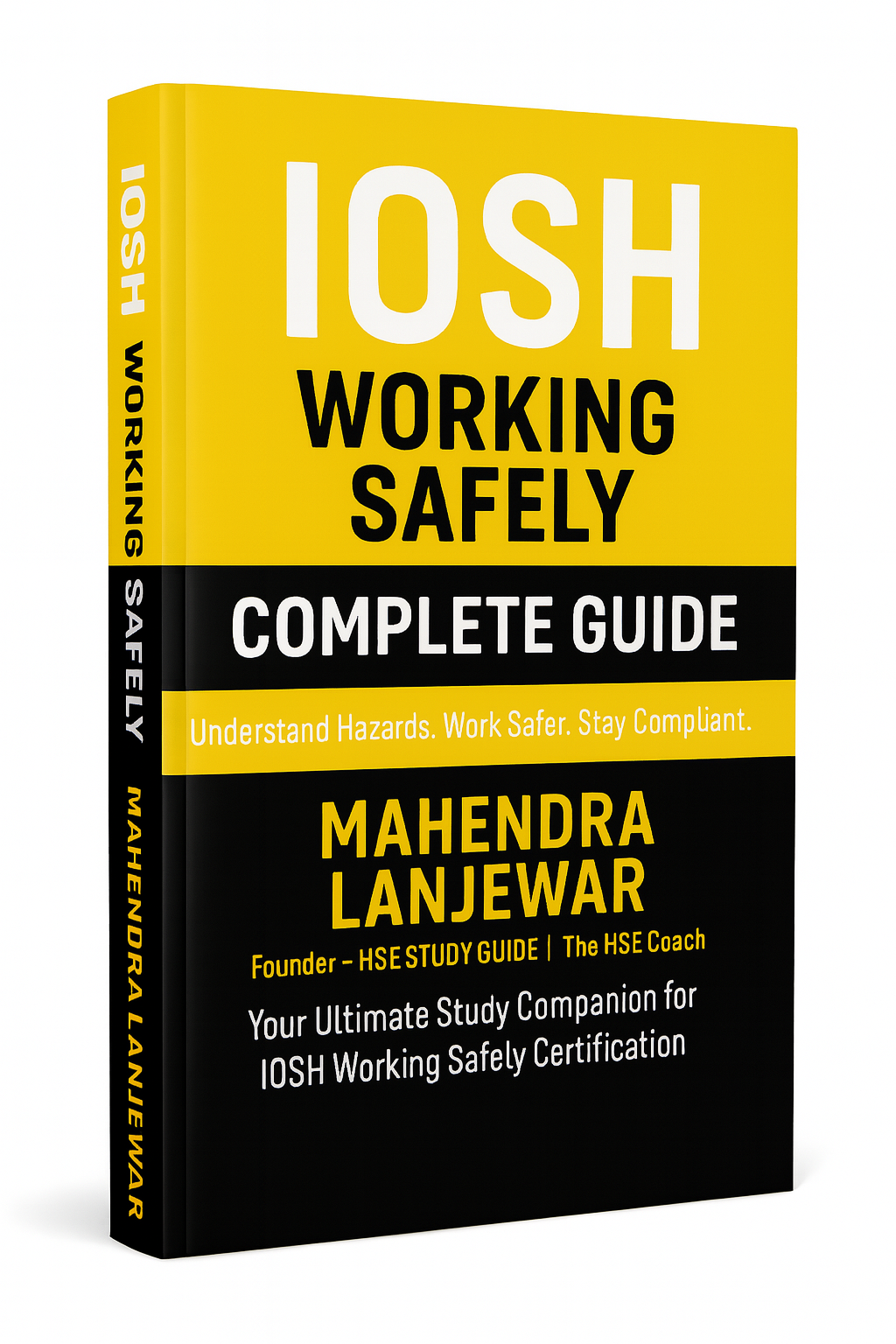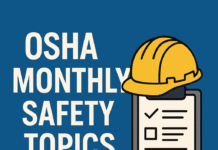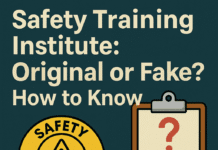
OSHA Standards: Ensuring Workplace Safety and Health
OSHA Standards : Workplace safety is of paramount importance, and ensuring the well-being of employees is the responsibility of every employer. The Occupational Safety and Health Administration (OSHA) was established by the U.S. Department of Labor to fulfill this mission. OSHA sets and enforces workplace safety standards to prevent accidents, injuries, and fatalities. In this article, we will explore the purpose, significance, and various aspects of OSHA standards to comprehend their role in maintaining a safe working environment.
Introduction to OSHA Standards
OSHA was created under the Occupational Safety and Health Act of 1970 and has since been instrumental in promoting and enforcing workplace safety regulations. Its primary goal is to ensure that employers provide a work environment free from recognized hazards that may cause harm to employees. By adhering to OSHA standards, businesses can protect their workforce, improve productivity, and avoid legal consequences.
The Purpose and Importance of OSHA Standards
The overarching purpose of OSHA standards is to safeguard employees from potential hazards related to their jobs. These standards cover a wide array of industries, ranging from general industry and construction to maritime and agriculture. OSHA’s comprehensive approach ensures that workers are protected across various sectors and workplaces.
OSHA Standards for General Industry
General industry includes a diverse range of businesses, such as manufacturing, warehousing, and healthcare. OSHA has several standards specifically tailored to address the unique risks associated with these industries.
OSHA Recordkeeping
OSHA mandates that employers keep records of workplace injuries and illnesses. This data helps identify patterns and trends, enabling businesses to implement targeted safety measures.
Hazard Communication
The Hazard Communication Standard ensures that employees are aware of the potential hazards they may encounter while working with hazardous chemicals.
Respiratory Protection
This standard sets guidelines for employers to protect their employees from respiratory hazards, such as dust, fumes, and other airborne contaminants.
Personal Protective Equipment (PPE)
OSHA requires employers to provide appropriate personal protective equipment to workers, such as helmets, gloves, and safety glasses.
Electrical Safety
This standard governs the safe use and maintenance of electrical equipment in the workplace, reducing the risk of electrical accidents.
OSHA Standards for Construction Industry
The construction industry presents unique safety challenges due to its dynamic and ever-changing work environment. OSHA has developed specific regulations to address these concerns.
Fall Protection
Falls are a leading cause of injuries and fatalities in construction. OSHA’s Fall Protection Standard aims to minimize these risks by setting guidelines for proper fall protection systems.
Scaffolding
Scaffolding accidents are preventable with proper construction and maintenance. OSHA’s Scaffolding Standard outlines safety requirements for erecting, using, and disassembling scaffolds.
Excavation and Trenching
OSHA has stringent rules for excavation and trenching to prevent cave-ins and related accidents.
Cranes and Rigging
Operating cranes and rigging require specialized knowledge and precautions. OSHA’s standard ensures proper training and safety measures.
Confined Spaces
Confined spaces can pose serious hazards. OSHA’s standard helps employers protect workers in these environments.
OSHA Standards for Maritime Industry
Maritime workplaces have unique safety considerations due to their specific operations. OSHA has established regulations for different aspects of the maritime sector.
Shipyard Employment
This standard addresses safety concerns in shipyard work, including shipbuilding, repair, and dismantling.
Marine Terminals
Safety standards for marine terminals cover loading, unloading, and handling of cargo.
Longshoring
Longshoring operations involve loading and unloading cargo. OSHA’s standard ensures safety during these tasks.
Gear Certification
OSHA requires that specific gear used in maritime activities meet safety standards.
OSHA Standards for Agriculture Industry
The agriculture industry has its own set of hazards related to farming, crop production, and livestock handling. OSHA has tailored standards to mitigate these risks.
Grain Handling
Safety measures for grain handling focus on preventing grain engulfment and suffocation hazards.
Poultry Processing
Safety standards for poultry processing plants aim to protect workers from various risks, including ergonomic injuries and exposure to chemicals.
Farm Machinery and Equipment
This standard outlines safety requirements for using and maintaining farm machinery.
Field Sanitation
OSHA requires employers to provide adequate sanitation facilities to agricultural workers.
OSHA Inspections and Penalties
To ensure compliance with OSHA standards, the administration conducts inspections and enforces penalties for violations.
How OSHA Inspections Work
OSHA inspections may be planned or unannounced. Inspectors check for potential hazards and assess the employer’s adherence to safety regulations.
Common Violations and Penalties
Certain violations are more prevalent than others. OSHA imposes penalties based on the severity of the violation and the employer’s history of non-compliance.
Steps to Comply with OSHA Standards
To avoid penalties and protect their workers, employers should prioritize compliance with OSHA standards. Implementing safety programs and training employees are crucial steps.
OSHA Training and Education
Educating both employers and employees about workplace safety is essential for fostering a culture of safety within an organization.
Employee Rights and Responsibilities
Workers have the right to a safe workplace and must be aware of their responsibilities in maintaining a secure environment.
Employer Obligations
Employers are responsible for providing a safe workplace and ensuring their workers are adequately trained.
Training Requirements
OSHA mandates specific training requirements for certain industries and hazards.
OSHA’s Role in Workplace Safety and Health
OSHA collaborates with employers and employees to promote and maintain a safe working environment.
Collaborations with Employers and Employees
OSHA provides resources and assistance to businesses, helping them improve their safety programs.
Resources and Assistance Provided by OSHA
OSHA offers a plethora of resources to employers and employees alike. Their website is a treasure trove of information, providing guidance on safety standards, compliance assistance, and best practices. Additionally, OSHA collaborates with various industry stakeholders to develop guidelines and recommendations tailored to specific sectors.
OSHA’s Future Outlook and Challenges
The landscape of workplace safety is continually evolving, and OSHA must adapt to emerging concerns and challenges.
Emerging Safety Concerns
As new technologies and industries emerge, so do novel safety concerns. OSHA must stay ahead of the curve to address potential risks adequately.
Technological Advancements in Safety
Technology plays a vital role in enhancing workplace safety. OSHA explores innovative safety solutions, such as wearable devices and automation, to mitigate hazards effectively.
Ongoing Efforts to Improve Standards
OSHA remains committed to improving existing standards and regulations based on data, research, and feedback from stakeholders.
Conclusion
OSHA standards are the backbone of workplace safety and health in the United States. By adhering to these standards, employers demonstrate their dedication to the well-being of their employees. OSHA’s comprehensive approach ensures that workers in various industries are protected from potential hazards, fostering a safer and more productive work environment.
By prioritizing safety, employers not only safeguard their workforce but also improve their bottom line by reducing incidents, injuries, and associated costs. Employees, in turn, can work with confidence, knowing that their well-being is valued and protected.
Through inspections, penalties, and collaboration, OSHA strives to create a safety-conscious culture in every workplace. The continuous efforts to improve standards and adapt to new challenges ensure that OSHA remains at the forefront of workplace safety regulation in the future.
FAQs About OSHA Standards
1. Are OSHA standards mandatory for all businesses? Yes, OSHA standards apply to most private sector employers in the United States. There are some exemptions for certain industries and employers with very few employees, but the majority must comply with OSHA regulations.
2. How can employers stay updated on OSHA standards and changes? Employers can stay informed about OSHA standards by regularly visiting the official OSHA website, attending safety workshops, and participating in industry-specific safety associations.
3. What are the most common OSHA violations? Some of the most common OSHA violations include failure to provide fall protection, improper hazard communication, inadequate respiratory protection, and lack of proper lockout/tagout procedures.
4. How does OSHA conduct inspections? OSHA inspections can be either planned or unannounced. Inspectors assess the workplace for potential hazards, review safety records, and interview employees to ensure compliance with safety regulations.
5. Can OSHA penalties be contested? Yes, employers have the right to contest OSHA penalties if they believe they have been issued unfairly or inaccurately. The process for contesting penalties involves communication with OSHA and may lead to an informal conference or formal hearing.





















